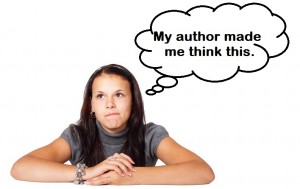Many years ago, I attended one of our nation’s service academies. When, during a meal, one of the upperclassmen heard some unnecessary talking at the table by an underclassman, he would ask, “Mr. —–, how’s the discipline at that end of the table?” The only correct answer was to bang your fist on the table and shout, “Iron-clad, sir!” Discipline is a vital attribute of military service; is it also important in writing?
 This excellent blog post by Jocelyn K. Glei explores the whole idea of discipline, including a fascinating psychological test for it, the Marshmallow Test. Researchers took four-year-old kids and showed them a marshmallow and said they could eat it now, or wait fifteen minutes and they’d be given two. All the kids wanted to wait, but not all could. Years later when they were in high school, the children who’d waited for two marshmallows at age four still demonstrated more disciplined behavior.
This excellent blog post by Jocelyn K. Glei explores the whole idea of discipline, including a fascinating psychological test for it, the Marshmallow Test. Researchers took four-year-old kids and showed them a marshmallow and said they could eat it now, or wait fifteen minutes and they’d be given two. All the kids wanted to wait, but not all could. Years later when they were in high school, the children who’d waited for two marshmallows at age four still demonstrated more disciplined behavior.
The website also provides a simple twelve-question quiz you can take to measure your own discipline. The article calls the quality ‘grit,’ but they mean that same tenacity and perseverance I’m talking about. It produces results ranging from 1.0 (undisciplined) to 5.0 (very disciplined).
Obviously a certain amount of discipline is necessary to be a writer. Something has to keep you in that chair, churning out words for hours on end. There will come times when you’d prefer to be doing something else. Authors joke about it often, that realization that a library book needs returning, or the floor under the bed needs cleaning, or the lawn needs mowing. Anything other than writing.
I believe a lack of discipline may be the thing that discourages people from writing, more so than any other reason. People will say things such as, “I could never write a novel. I don’t know where writers get their ideas.” But just about everyone has a story to tell. Ideas aren’t the problem, in my view. It’s the thought of devoting long hours alone to the task of generating the words, the paragraphs, the scenes. The duration of the effort seems daunting.
That’s why, as the saying goes, writing a novel is a one-day event. As in, “one day, I’m going to write a novel.”
So I do think a certain amount of doggedness is necessary, if only to get you through those tough times when the words won’t flow. There must be some recognition of the value of delayed gratification; otherwise it would be too easy to just stop writing.
When I set out to blog about this topic, I assumed a writer couldn’t get too much discipline, that it was an attribute a writer needed in full measure. Then I got to thinking about people with extreme discipline–people who never, ever give up. They will pursue a project to completion with single-minded devotion, not letting anything get in their way. Again, the way I’ve described it still may sound like a desirable trait, but consider there may be a certain lack of adaptability in extremely disciplined people. They might not be so willing to abandon a course of action even if the situation changes.
For you as a writer, a story might not be working at all. Try as you might, it’s not coming together. Or perhaps the story you were writing would have been based on some real-life situation remaining unchanged, but it changed. For example, your story might have been based on the continued existence of some famous person who then died while you were writing the story.
In such cases, a certain degree of flexibility might be more important than a 5.0 rating of discipline. I’m not saying disciplined people always lack adaptability; the words aren’t antonyms. I’m just saying both attributes are important to writers.
You might disagree with me. That’s what the ‘leave a comment’ thing below is for. For those of you dying of curiosity, my grit rating on the quiz was 3.92. You might also be asking, “Mr. Poseidon’s Scribe, how’s discipline at that end of the internet?” Bang! Iron-clad, sir!” At least, that’s the response from–
Poseidon’s Scribe

















